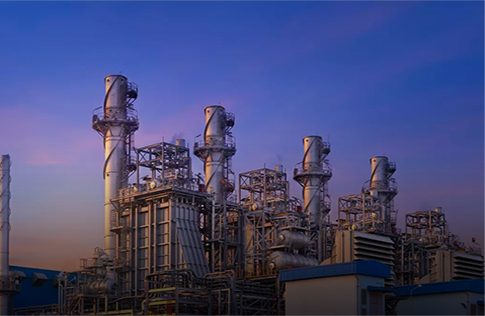-
Cangzhou Yulong Steel Co., Ltd.
-
Phone:
+86 13303177267 -
Email:
admin@ylsteelfittings.com
- English
- Arabic
- Italian
- Spanish
- Portuguese
- German
- kazakh
- Persian
- Greek
- French
- Russian
- Polish
- Thai
- Indonesian
- Vietnamese
- Zulu
- Korean
- Uzbek
- Hindi
- Serbian
- Malay
- Ukrainian
- Gujarati
- Haitian Creole
- hausa
- hawaiian
- Hebrew
- Miao
- Hungarian
- Icelandic
- igbo
- irish
- Japanese
- Javanese
- Kannada
- Khmer
- Rwandese
- Afrikaans
- Albanian
- Amharic
- Armenian
- Azerbaijani
- Basque
- Belarusian
- Bengali
- Bosnian
- Bulgarian
- Catalan
- Cebuano
- China
- China (Taiwan)
- Corsican
- Croatian
- Czech
- Danish
- Esperanto
- Estonian
- Finnish
- Frisian
- Galician
- Georgian
- Kurdish
- Kyrgyz
- Lao
- Latin
- Latvian
- Lithuanian
- Luxembourgish
- Macedonian
- Malgashi
- Malayalam
- Maltese
- Maori
- Marathi
- Mongolian
- Myanmar
- Nepali
- Norwegian
- Norwegian
- Occitan
- Pashto
- Dutch
- Punjabi
- Romanian
- Samoan
- Scottish Gaelic
- Sesotho
- Shona
- Sindhi
- Sinhala
- Slovak
- Slovenian
- Somali
- Sundanese
- Swahili
- Swedish
- Tagalog
- Tajik
- Tamil
- Tatar
- Telugu
- Turkish
- Turkmen
- Urdu
- Uighur
- Welsh
- Bantu
- Yiddish
- Yoruba

Nov . 09, 2024 23:24 Back to list
Flange Varieties Used in the Oil and Gas Industry Explained
Types of Flanges in Oil and Gas Industries
Flanges are critical components in the oil and gas industry, serving as connectors between pipes, valves, and other equipment. They provide a reliable and leak-proof seal to maintain the integrity of the system under high pressures and temperatures. Understanding the various types of flanges is essential for engineers and professionals working in this field. This article explores the main types of flanges commonly used in the oil and gas sector, their features, and applications.
1. Weld Neck Flanges
Weld neck flanges are designed to be welded to piping systems. They feature a long neck that projects from the flange, which provides a gradual transition to the pipe. This design minimizes stress concentration and enhances strength. Weld neck flanges are ideal for high-pressure applications and are commonly used in critical systems where reliability is paramount. Their ability to withstand extreme temperatures and pressures makes them suitable for oil and gas pipelines.
2. Slip-On Flanges
Slip-on flanges are a popular choice due to their ease of installation. They are designed to be slipped over the end of a pipe and then welded into place, allowing for quicker assembly. While they are generally less expensive than weld neck flanges, they are not recommended for high-pressure applications as they have a higher susceptibility to leaks if not correctly installed. Slip-on flanges are commonly used in low-pressure systems and applications where cost is a significant factor.
3. Blind Flanges
Blind flanges are solid flanges without a center hole. They are used to seal the end of a piping system or provide access to internal components for inspection and maintenance. In oil and gas operations, blind flanges are crucial for isolating sections of a pipeline, allowing for safe maintenance work without shutting down the entire system. They can be made from various materials, including carbon steel, stainless steel, and other alloys, depending on the application requirements.
types of flanges in oil and gas

Socket weld flanges are designed for smaller diameter piping. They consist of a socket in which the pipe is inserted and then welded around the joint. This type of flange provides a strong and secure connection, making it suitable for high-pressure and high-temperature applications. Socket weld flanges are commonly used in refining processes and distribution systems in the oil and gas industry.
5. Threaded Flanges
Threaded flanges do not require welding; instead, they have internal threads that allow them to be screwed onto the corresponding pipe. This feature makes them particularly useful for installations where welding may not be feasible. However, threaded flanges are limited to lower pressure applications and are typically used in small diameter pipes or for temporary installations.
6. Lap Joint Flanges
Lap joint flanges are used in conjunction with a stub end. This type of flange is helpful in applications where frequent disassembly is required. The flange can rotate around the stub end, allowing for alignment after the assembly. Lap joint flanges are advantageous for systems where frequent cleaning, maintenance, or inspections are necessary, often found in the oil and gas industry where boiler and HVAC systems are involved.
7. Orifice Flanges
Orifice flanges are specialized flanges designed to measure flow rates in piping systems. They are equipped with holes for flow measurement devices, allowing for accurate flow calculations. In oil and gas operations, proper measurement of flow is crucial for efficiency and safety, making orifice flanges an integral component in many pipelines.
Conclusion
Flanges play a vital role in the oil and gas industry, ensuring the safety and effectiveness of various systems. Understanding the different types of flanges, their features, and their applications enables engineers and industry professionals to select the appropriate components for their specific needs. As technology advances, the design and materials of flanges continue to evolve, contributing to the efficiency and reliability of oil and gas operations worldwide. Whether it's weld neck, slip-on, or orifice flanges, each type has its unique strengths that cater to the diverse requirements of this critical industry.
Latest news
-
ANSI 150P SS304 SO FLANGE
NewsFeb.14,2025
-
ASTM A333GR6 STEEL PIPE
NewsJan.20,2025
-
ANSI B16.5 WELDING NECK FLANGE
NewsJan.15,2026
-
ANSI B16.5 SLIP-ON FLANGE
NewsApr.19,2024
-
SABS 1123 FLANGE
NewsJan.15,2025
-
DIN86044 PLATE FLANGE
NewsApr.19,2024
-
DIN2527 BLIND FLANGE
NewsApr.12,2024
-
JIS B2311 Butt-Welding Fittings LR/SR 45°/90° /180°Seamless/Weld
NewsApr.23,2024











